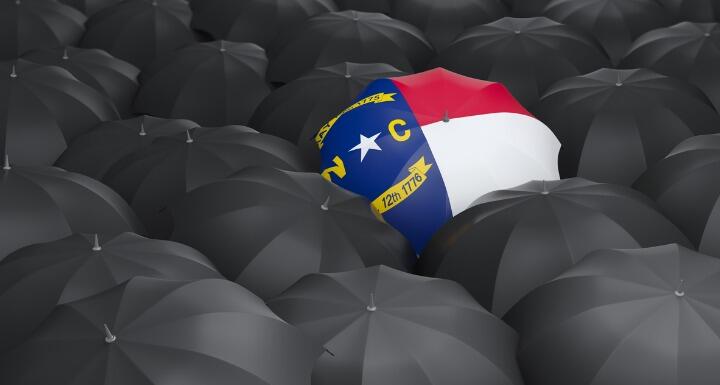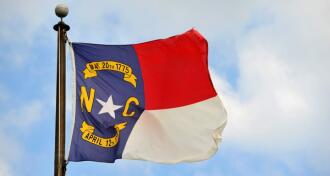You've been told to stay at home.
Now, you may be under a nightly curfew, or you are told you must designate one shopper in your household. Public parks and beaches are closed, and food trucks are prohibited from your neighborhood. You are prohibited from renting your condominium unit in the mountains on a weekly basis, or your boat is stranded because boat ramps are closed to ensure social distancing.
While the Governor has imposed statewide restrictions, local governments are adding their own spin on stay-at-home restrictions. You may be happy with these restrictions because you see the benefits in the fight against the coronavirus. Or you may be fiery mad because you think they overreach with questionable benefits.
Social media gives us a tremendous resource to use to connect with each other during these times of social distancing. But social media also serves as a breeding ground of innuendo and speculation. This has been especially true among local elected officials, many of whom are getting praised or blamed on social media for restrictions they did not enact.
Governor's Authority
Section 166A-19.20 of the North Carolina General Statutes allows the Governor to declare a state of emergency for all of North Carolina. On March 10, 2020, the Governor of North Carolina issued Executive Order No. 116, which declared a State of Emergency to address the novel coronavirus, COVID-19.
This initial emergency declaration was followed by further executive orders. On March 23, 2020, the Governor issued Executive Order No. 120 that prohibited mass gatherings of a certain size and ordered certain entertainment facilities to close. On March 27, 2020, the Governor of North Carolina issued Executive Order No. 121 that imposed a "stay at home" obligation on all citizens, residents, and visitors currently in the State of North Carolina, which Executive Order directs all persons to stay at home, their place of residence, or current place of abode, with limited exceptions.
The Governor's executive orders all recite that the business closures and stay-at-home requirements were enacted pursuant to the Governor's authority under Chapter 166A's emergency declaration powers. The Governor acknowledges that local governments may impose their own restrictions, and the most restrictive rule applies. The Governor indicates he acted pursuant to N.C. Gen. Stat. § 166A-19.30(c) because he determined that "local control of the emergency is insufficient to assure adequate protection for lives and property" of North Carolinians.
Local Government's Authority
Not surprisingly, local leaders have responded with their own actions after the Governor found local control was inadequate for a variety of reasons. This has triggered a variety of different restrictions in different parts of the state.
Section 166A-19.22 of the North Carolina General Statutes also allows the governing body of a municipality (towns or cities) or a county to declare an emergency. Under Section 166A-19.31, counties and municipalities may enact their own restrictions to, among other things, curb business operations and limit movement of people in public places.
Coincidentally, after the Governor found local control to be insufficient, some local leaders have found the Governor's "stay-at-home" order to be insufficient. Local leaders have found the Governor's stay-at-home order inadequate in substance and inadequate in clarity. As one example, Columbus County Sheriff Jody Greene asked the Columbus County Commission for a nightly curfew because he believed "a gummy bear has more teeth" than a stay-at-home order. Sheriff Greene's request was granted, and the unincorporated portions of Columbus County are subject to the nightly curfew.
Local governments often couch their new restrictions in two ways. Some restrictions are announced as interpretations of the Governor's stay-at-home order. Examples of these restrictions include limiting hotel stays and prohibiting short-term rentals. Other restrictions simply impose wholly new restrictions based on local governments' power under Section 166A-19.31. Examples of these restrictions are curfews, shopping restrictions, and boat ramp closures.
Who Makes the Decision at the Local Level?
Section 166A-19.22(a) allows local governments to delegate the authority to declare an emergency to the mayor of a municipality or the chair of the board of county commissioners of a county. This delegation may be done by an ordinance adopted by the municipality or county. When municipalities merely adopt countywide restrictions, Section 166A-19.22(b)(2) also allows the mayor or the governing body to agree to the county restrictions. For these reasons, local government board members are often not part of these emergency declarations and new restrictions being imposed at the local level. Frequently, mayors and commission chairs are making these decisions on their own.
In many instances, the delegation of authority for declaring an emergency to the mayor or commission chair was enacted long before any emergency existed. This delegation of authority may have occurred as part of the adoption of entire ordinances or larger amendments, and the delegations of authority often have existed in local government ordinances for some time.
When the mayor or county commission chair is empowered to make the emergency declaration, it may be made unilaterally by the mayor or chair, or there may be consultation with other members of the town board, city council, or county commission. But consultation may not be required and may not be offered. For this reason, a member of a county commission or a member of a town council may not have any participation in new restrictions from the local governmental unit they serve. The decision may be made unilaterally by the mayor or chair of the county commission.
Before credit or blame is given, emergency declarations by local governments should be read carefully to see who has enacted the new restrictions. The emergency declarations themselves often explain who has made the declaration, and it often is not the entire governing board, council, or commission after deliberation or a vote. If the declaration itself does not answer the question of who imposed the local restrictions, the question will be answered in your local ordinance.
Conclusion
Emergency declarations and restrictions are designed under Chapter 166A of the North Carolina General Statutes to originate at the local level. This is another reason why local elections matter and why local elected officials have a significant impact on our day-to-day lives.
In the event of an emergency, multiple layers of government may intervene, and local ordinances may prescribe who makes local decisions in those emergency moments. Before you virtually pat someone on the back to thank them for a new protective measure, or before you scream at them on social media for restricting your movement, you should inquire about who actually imposed the new restriction. It's not always the same from place-to-place.








